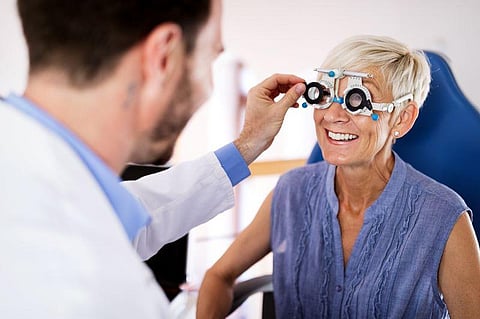FRIDAY, Sept. 8, 2023 (HealthDay News) -- New Swedish research suggests that up to 5% of 70-year-olds have glaucoma, and half of those diagnosed didn't even know they had the disease.
“Of those who were diagnosed with glaucoma via the study, 15 people -- or 2.7% of all participants -- were unaware that they had the disease before being examined,” said study author Lena Havstam Johansson, a PhD student at the University of Gothenburg and a specialist nurse at Sahlgrenska University Hospital, both in Gothenburg, Sweden. “So half of those who turned out to have glaucoma were diagnosed because they took part in the study.”
Those who received this diagnosis were able to start treatment with daily eye drops that lower the pressure in the eye and slow optic nerve damage.
Researchers noted that those with glaucoma had similar levels of physical activity and did not smoke more or drink more alcohol than those without the disease. Their overall quality of life was as good as the others. They were not more tired or more depressed.
“This was a positive surprise, and was a finding that I hope can bring comfort to many people who have been diagnosed with glaucoma. It’s hard to live with a disease that gradually impairs vision, but life can still be good in many ways,” Havstam Johansson said in a University of Gothenburg news release.
Yet, those who had glaucoma did report that their vision-related quality of life was poorer.
“It’s harder to climb stairs, see curbs in the evening and notice things in your peripheral vision. This means that people with glaucoma may avoid visiting others, or going to restaurants or parties, and instead stay at home. They lose their independence, and may feel frustrated about it,” Havstam Johansson noted.
This research was part of the H70 study at the University of Gothenburg, which is examining the health of older people. It includes physical and cognitive exams.
There were 1,203 70-year-olds included in the glaucoma study. Most of the participants answered written questions about their eye health and the presence of glaucoma in their family. Eye specialists at Sahlgrenska University Hospital also examined 560 of the participants.
This confirmed hereditary factors behind the disease. Those diagnosed with glaucoma were more likely to have a close relative with the same diagnosis. While glaucoma involves higher eye pressure, a majority of those who were newly diagnosed, 67%, still had normal eye pressure.
The findings were published recently in the journal Acta Ophthalmologica.
The reason people may believe their vision is still normal even after the early stages of disease begin is that the healthy eye can compensate for vision loss.
Given that, what are the signs of glaucoma?
Open-angle glaucoma is the most common type, where the eye does not drain fluid as well as it should, according to the American College of Ophthalmology. Eye pressure begins to builds and starts to damage the optic nerve. This type of glaucoma is painless and causes no vision changes at first. Regular eye exams are the best way to find early signs of damage to the optic nerve.
Meanwhile, angle-closure glaucoma happens when someone’s iris is very close to the drainage angle in their eye, the academy says. When the drainage angle gets completely blocked, eye pressure rises very quickly. This is called an acute attack. It is an emergency, and you should call your ophthalmologist right away or you could go blind.
Here are the signs of an acute angle-closure glaucoma attack:
- Your vision is suddenly blurry
- You have severe eye pain
- You have a headache
- You feel sick to your stomach
- You throw up
- You see rainbow-colored rings or halos around lights
More information
The U.S. National Eye Institute has more on glaucoma.
SOURCES: University of Gothenburg, news release, Sept. 7, 2023; American College of Ophthalmology


